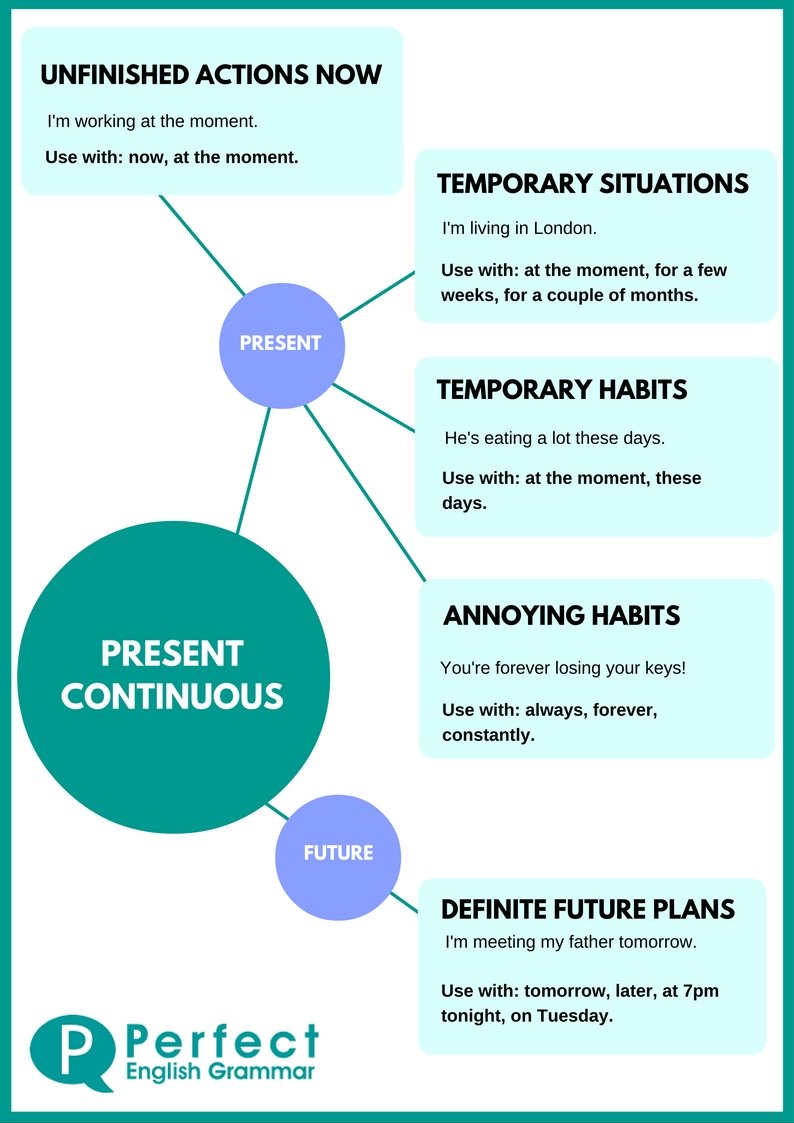Present Continuous Tense ili Sadašnje Trajno Vreme, koristimo za radnje koje se dešavaju u trenutku govora, kao i za neke trenutne navike. Ovo vreme ne možemo da koristimo sa stativnim glagolima.
Gradimo ga uz pomoć sadašnjeg oblika glagola TO BE i nastavka -ing na glavnom glagolu:
| Positive | Positive Short Form |
| I am sleeping | I'm sleeping |
| you are sleeping | you're sleeping |
| he is sleeping | he's sleeping |
| she is sleeping | she's sleeping |
| it is sleeping | it's sleeping |
| we are sleeping | we're sleeping |
| they are sleeping | they're sleeping |
| Negative | Negative Short Form |
| I am not sleeping | I'm not sleeping |
| you are not playing | you aren't playing |
| he is not reading | he isn't reading |
| she is not working | she isn't working |
| it is not raining | it isn't raining |
| we are not cooking | we aren't cooking |
| they are not listening | they aren't listening |
| Yes / No Questions |
| am I eating chocolate ? |
| are you studying now ? |
| is he working ? |
| is she doing her homework ? |
| is it raining ? |
| are we meeting at six ? |
are they coming ?
| Wh Questions |
| Why am I eating chocolate ? |
| What are you studying now ? |
| When is he working ? |
| What is she doing ? |
| Why is it raining ? |
| Who are we meeting ? |
| How are they travelling ? |
|

Majo, pogledaj i moj blog o padežima, pa možemo praviti paralelu o upotrebi genitiva, akuzativa u srpskom i engleskom jeziku.
ОдговориИзбришиInače, sve ti je vrlo pregledno, jasno i konkretno objašnjeno.
Pozz